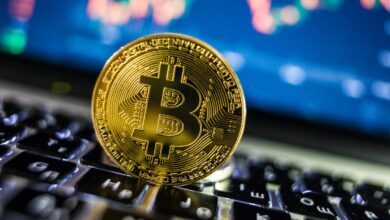Returning To Our Pre-Pandemic Growth Trend

For us, that’s anywhere between 2014 and last year. In 2014, the “Commodity Supercycle”, the result of China’s growth spurt came to a screeching end.
Invited to speak on the economy’s outlook for 2021, I always sense a dark unspeakable presence in the room. Shadowing much of the ensuing conversation is the question: “What’s going to happen to us after last year’s sundry downsides?” 2020, the world as we knew it imploded. Unchecked, SARS-CoV-2 threatened to carve a path of destruction as terrible as that described by the Spanish flu (1918-1920). Checked, it wreaked havoc on everything. Social cohesion. Political transitions. Citizens’ mental health. Consumer spending. Collapse of the contact-intensive sectors of the economy. Nothing was spared. The economies that drive global growth saw levels of shrinkage last seen in 1929-1933. Marginal economies such as ours were hit twice: by the loss of our external markets (in our case, through the failure of the global market for crude oil); and by the implosion of consumer spending, as we also put in place non-pharmaceutical protocols to try to contain the virus’ spread.
Depending on the relative sophistication of the economy (how soon herd immunity may be realised through vaccination programmes, and how flexible supply responses are), most experts expect a return to pre-pandemic growth trends beginning from the end of this year. For the Nigerian economy, though, with vaccination levels requisite to achieve herd immunity unlikely until mid-2022, the odds of a return to pre-pandemic growth levels before 2024 are low. A “covid-19 limbo” is how a colleague described it. Dreadful, because we are still witnesses to the havoc wrought by the virus on the economy. But more inconvenient, because for as long as we are unable to hold down the virus’ spread, we run the risk of becoming a petri-dish for different mutations of it.
Also Read: Forget Oil. Forget Taxation. Debt Pays Nigeria’s Bills
Still, this is the least of our problems. A return to the pre-pandemic growth trend? For us, that’s anywhere between 2014 and last year. In 2014, the “Commodity Supercycle”, the result of China’s growth spurt came to a screeching end. And along with it, the Panglossian narratives around “Africa Rising”. As dependent on commodity earnings as the next frontier country, the Nigerian economy tanked in 2015. Only commencing a snail-paced return to growth by mid-2016. And, in the event, it averaged a little under 2% annual growth in the two and a half years to 2019. By which time, government revenues were treading deep water.
A debt burden that had seemed comfortable (expressed as a proportion of GDP) suddenly looked distressed in the light of the revenue levels (non-existent) required to service it. It did not help that a couple of years before we had started to finance the recurrent part of government spending through borrowing. So, the year before the pandemic was when the government sought to improve its revenue base (increased VAT rate, deregulation of electricity tariffs, and pump-station price of petrol) and curtail leakages (including through battening the nation’s land borders). It was the year, therefore, when (in September) the inflationary trend that we saw dominate discussions about the economy all of last year started.
This then is the growth level we expect to return to by 2024!
Should we be worried? Yes. Especially as there is clear evidence that our problems on the economic front may be morphing into or inflaming social and political difficulties. Much of the possible outcomes, of course, will depend on how the government at the centre responds to all of these challenges. On present form, only two options present themselves. Business as usual. Here, a nanny state continues to jealously guard its monopoly access to the levers for controlling the economy. The government tries to keep the domestic cost of borrowing down, especially through the central bank’s priming of the pump, in the hope that cheap money will eventually boost investment. It will continue to impose sanctions on market participants that attempt to get around these restrictions. And as we have seen since 2015, inflation will continue to trend up. As will unemployment. Faggot to the embers that feed our fissiparous tendencies?
Unfortunately, the glut in the global market for crude oil might mean that prices will remain well below our budget’s break-even point all of this year. OPEC+’s attempt to maintain the reins on the market would also mean that we would sell this year far less oil than we may produce. All of which could lead to the second possible response by the government to the problem as its fiscal position becomes increasingly untenable: a pirouette away from the state doing everything. Some of the ingredients of this pivot will hurt, no doubt. The central bank’s benchmark rate will have to rise well enough to try to bring inflation down ― as high as 18% ultimately if inflation remains close to its current 16% year-on-year monthly increases.
Also Read: IMF Upgrades Global Growth Forecast, Nigeria to Expand 1.5% in 2021
Businesses will scream “Murder!”, true. But remember that far fewer of them (than are required to lend the needed fillip to the economy) accessed bank lending at the rates we have advertised over the last three years. Besides, with the return on naira-denominated assets positive, some of the pressure on the domestic currency will lift. And with the central bank now solely focused on price stability, much of the uncertainty that has held up investment in the economy should evanesce. Of course, the government will have to look at the efficiency of its spending. And this is not just because we need all that debt to drive productivity growth that makes it easier for us to pay back. Beyond that, a thriving private sector needs for the bureaucracy to work very well. In the end, this second option calls for nothing more than that government puts its money where its mouth is on the goal of bringing down the cost of doing business in the country.
Unfortunately, a course of reforms to the economy that works will see short-term increases in the pain borne by domestic entities. And only a gradual accretion of gains. This is why the chances are that our policy response this year will be the more popular “business as usual”. Even though, that way, our destination is down Shit Creek in a leaky canoe ― and without paddles.
By Ifeanyi Uddin, a strategy expert in the banking industry.







